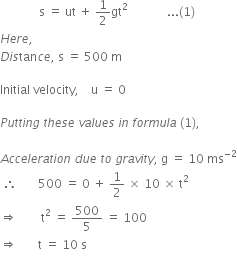A stone is dropped from the top of a tower 500 m high into a pond of water at the base of the tower. When is the splash heard at the top? Given, g = 10 ms–2 and speed of sound = 340 ms–1.
First, we find the time taken by the stone to reach the base of the tower.
We use the relation,

Time taken by sound to travel from base of the tower to its top,
![]()
![]()



